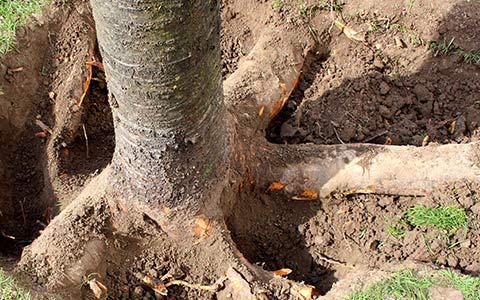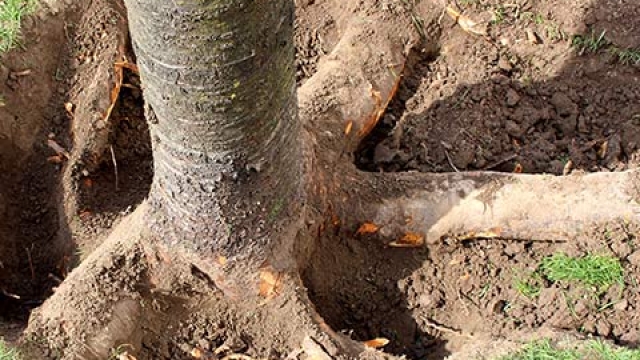Removing a tree can be a challenging task, but with the right knowledge and approach, it can be done efficiently and safely. Whether you are in the process of clearing a piece of land or have a tree that poses a risk to your property, this step-by-step guide will help you navigate the tree removal process with ease.
Before diving into action, it is crucial to understand that tree removal should only be undertaken by those with the necessary experience and expertise in handling such tasks. Engaging the services of a professional tree removal company or an arborist is highly recommended, as they possess the skills and equipment needed to ensure a smooth and efficient removal.
Once you have decided to proceed, the first step in the tree removal process is to assess the situation and plan accordingly. Take a close look at the tree and its surrounding environment to evaluate any potential hazards, such as nearby structures or power lines. Additionally, consider the size, condition, and type of tree, as these factors will influence the approach you should take.
Next, it is essential to obtain any necessary permits or permissions before commencing the tree removal. Depending on your location and local regulations, you may need to notify relevant authorities or obtain consent for the removal. Failure to comply with these requirements can result in legal repercussions, so it is vital to stay within the boundaries of the law.
Once you have obtained the necessary permits and permissions, it is time to prepare the area for tree removal. Clear any debris or obstacles that may interfere with the process and create a safe working environment. Ensure that all necessary tools and equipment, such as chainsaws, ropes, and safety gear, are in good working condition and readily available.
When it comes to actually removing the tree, the method will depend on various factors, such as the tree’s size, location, and surrounding environment. In some cases, a tree can be felled in one piece, while in others, it may need to be dismantled limb by limb to minimize the risk of damage. Professional expertise will come into play here, as determining the safest and most efficient approach requires a thorough understanding of tree anatomy and cutting techniques.
During the tree removal process, it is crucial to prioritize safety above all else. Exercise caution at all times and follow proper safety protocols, including wearing protective gear and ensuring a safe distance between yourself and others. Additionally, consider enlisting the help of a spotter to provide guidance and maintain clear communication throughout the procedure.
Once the tree is successfully removed, it is important to clean up the area and dispose of the debris responsibly. Securely load and transport the cut tree sections and branches to an appropriate disposal site or recycling center, adhering to local waste management guidelines.
Remember, efficient tree removal requires careful planning, proper tools, and expertise. Safety should always be your top priority, so if you are unsure or uncomfortable with any aspect of the process, it is advisable to seek professional assistance. By following these step-by-step guidelines, you can ensure a smooth and efficient tree removal while minimizing any potential risks or issues that may arise.
Assessing the Tree and Planning the Removal
In order to efficiently remove a tree, it is important to first assess its condition and plan the removal process accordingly. By taking the time to evaluate the tree and make a thorough plan, you can ensure that the removal is done safely and effectively. Here are the key steps to assess the tree and plan its removal:
Tree Trimming Service Grand Rapids Mi
-
Inspect the Tree: Begin by closely examining the tree to determine its overall health and any potential hazards. Look for signs of decay, disease, or pest infestation. Check for any leaning or weak branches that could pose a danger during the removal process. Identifying these issues will help in determining the best approach for removing the tree.
-
Consider the Surroundings: Assess the proximity of the tree to any surrounding structures, power lines, or other trees. Take note of any potential obstacles that could affect the removal process and plan accordingly. It may be necessary to engage the services of professionals if there are any risks involved in removing the tree in a confined space or near sensitive areas.
-
Evaluate Equipment and Resources: Determine what equipment and resources will be needed to safely remove the tree. This could include chainsaws, ropes, harnesses, or heavy machinery, depending on the size and complexity of the job. Make sure to have the necessary tools readily available, or consider hiring experienced tree removal specialists who have the expertise and equipment to handle the task efficiently.

By carefully assessing the tree’s condition, considering the surroundings, and evaluating the required resources, you can effectively plan the removal process. This will help ensure a safe and efficient tree removal, minimizing any potential risks or damages.
Preparing for Tree Removal
Step 1: Assess the Tree
Before undertaking a tree removal project, it is crucial to assess the tree thoroughly. Start by examining the tree’s overall health and condition. Look for signs of decay, disease, or structural issues. If the tree is near power lines or buildings, take note of any potential risks associated with its removal. Additionally, identify the tree species and consider its growth patterns and root system.
Step 2: Obtain Necessary Permits
In many areas, tree removal requires obtaining permits or permissions from local authorities. Research the regulations and requirements in your specific location to ensure compliance. Contact the appropriate agencies or departments to obtain the necessary permits or seek professional assistance if needed. Failing to obtain the required permits can lead to legal consequences, so it is essential to complete this step before proceeding.
Step 3: Plan for Equipment and Safety
Proper equipment and safety measures are crucial for an efficient tree removal process. Assess the size and condition of the tree to determine the equipment necessary for the task. Equipment can include chainsaws, ropes, harnesses, and safety gear. Ensure that all equipment is in good working condition and that personnel involved in the removal are trained and experienced. In addition, establish a safety plan to minimize risks and protect both people and property during the tree removal process.
By following these preparatory steps, you will set the foundation for an efficient and safe tree removal. Taking the time to assess the tree, obtain necessary permits, and plan for equipment and safety will contribute to a successful removal process. Stay tuned for the next section, where we’ll delve into the actual tree removal process itself.
Executing the Tree Removal Process
Once you have prepared the area and gathered the necessary equipment, it’s time to execute the tree removal process. Before you begin, make sure you have taken all the safety precautions and have a clear plan in place.
-
Begin by assessing the tree and identifying any potential hazards. Look for signs of decay, weak branches, or other structural issues that could pose a danger during the removal process. It’s important to evaluate the tree from different angles to ensure a comprehensive understanding of its condition.
-
Next, determine the best approach for removing the tree. Consider factors such as its size, location, and surrounding structures. Based on your assessment, decide whether you will use a chainsaw, hand saw, or hire professional help.
-
Start by removing the smaller branches first. Begin at the bottom of the tree and work your way up, cutting branches as close to the main trunk as possible. This will help prevent any unnecessary damage to the surrounding area.
-
Once the branches have been removed, you can begin cutting the main trunk. Start by making a horizontal cut on the side of the tree that is facing the direction you want it to fall. This is known as the "cutting notch."
-
After making the cutting notch, move to the opposite side of the tree and make a horizontal cut slightly above the bottom cut. This will create a "back cut" and guide the tree in the desired direction as it falls.
-
As the tree starts to fall, be prepared to move quickly and safely out of the way. Remember to always have an escape route planned in case the tree doesn’t fall as expected.
-
Once the tree is on the ground, carefully remove any remaining branches or debris. This will help ensure a clean and efficient removal process.
-
Finally, dispose of the tree properly. You can either cut it into smaller pieces for firewood or contact your local authorities for guidance on proper disposal methods.
By following these steps, you can execute the tree removal process efficiently and safely. Remember, if you’re unsure about any part of the process, it’s always best to seek professional assistance.
